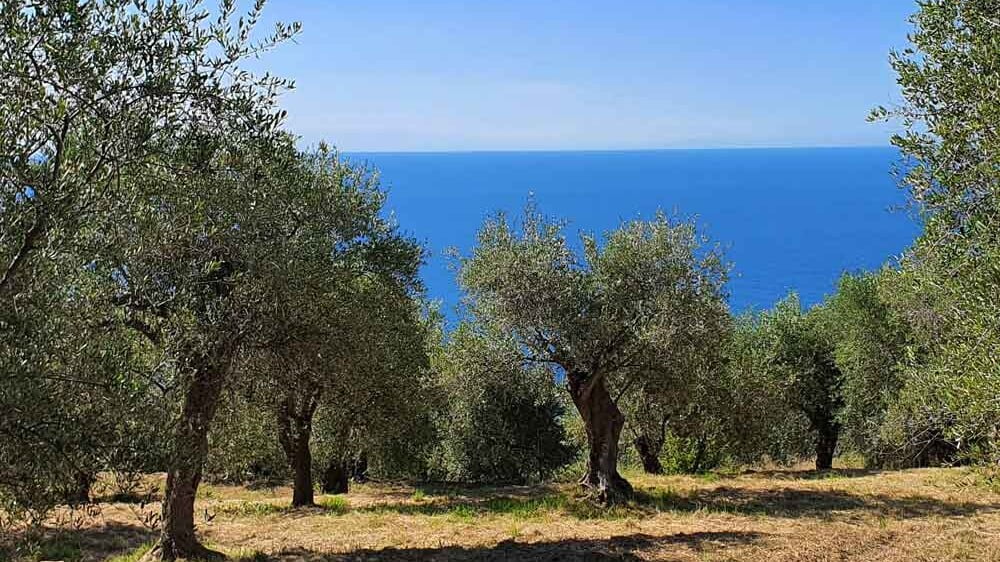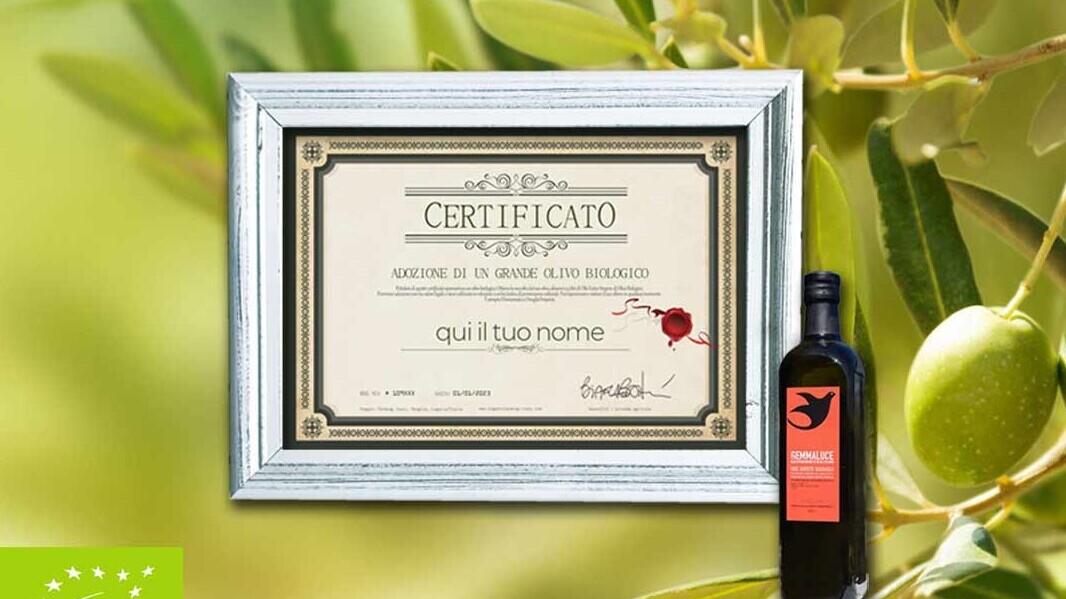All about olive trees – symbols of vitality and pleasure
All about olive trees: Olive trees are not only an important part of the Mediterranean landscape, but also a symbol of vitality, peace and enjoyment. These amazing trees have a long history and a remarkable ability to adapt to adverse conditions. In this article, we will explore the fascinating world of olive trees and examine their importance in different cultures as well as their economic importance to the global economy.
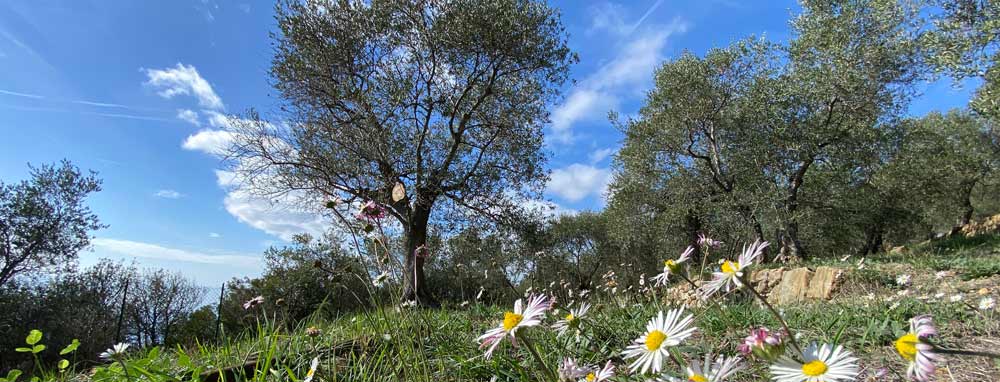
The history of olive trees in different cultures, religions and myths
The olive tree (Olea europaea) is one of the oldest and most versatile cultivated plants in the world and has a rich history spanning thousands of years and different cultures, religions and myths. This article is dedicated to the fascinating history of olive trees in various contexts.
The origins of the olive tree
The origin of the olive tree can be traced back to ancient times and its cultivation is historically deeply rooted in the regions of the Mediterranean, particularly in Greece and the Middle East. The olive was cultivated in the eastern Mediterranean more than 6,000 years ago. The oldest known olive tree remains were found in Santorini, Greece, and are around 3,500 years old.
The importance in antiquity
In ancient times, olives were of great importance for the food supply and economy of the regions in which they were cultivated. The olive fruit was not only used as food, but also to produce olive oil, which was used in the kitchen as well as for ritual and healing purposes. Olive branches were a symbol of peace and were often depicted as a sign of prosperity and abundance.
The role of the olive in Greek mythology
The olive also played an important role in Greek mythology. Legend has it that Athena, the goddess of wisdom, and Poseidon, the god of the sea, fought over the rule of the city of Athens. As a gift to the inhabitants of the city, Athena thrust her spear into the ground, and from this spear grew an olive tree. The inhabitants of Athens chose Athena as their patron goddess, and the olive tree became a symbol of the city and its civilization.
The significance in Roman culture
The importance of the olive also extended to the Roman Empire. The Romans valued olive oil not only as food, but also as fuel for lamps and for skin care. They also used olive branches during the victory procession to symbolize peace and reconciliation.
The olive in religion
The olive also has a strong presence in various world religions. In Christianity, it is a symbol of peace and reconciliation. In the Old Testament of the Bible, there is the story of the dove that brings Noah an olive branch as a sign that the Flood is over and the earth is habitable again.
In Islam, the olive is mentioned several times in the Koran and is considered a sacred fruit. Olive oil has a special significance in Islam and is often used for ritual purification and as food.
The olive tree cultures of the modern age
Over time, the cultivation of olive trees spread beyond the Mediterranean region to other parts of the world, including California, Australia and South Africa. Today, olive oil production has become a global industry and olive trees are grown all over the world.
All about olive trees: the botany

Olive trees (Olea europaea) are one of the oldest and most versatile useful plants in the world. They are known for their olive-shaped fruit, which is processed into olive oil. These trees are not only economically valuable, but also culturally and ecologically significant.
Distribution and origin
The olive tree is native to the Mediterranean region and has spread from there to other parts of the world. The origins of the olive tree can be traced back up to 6,000 years and it is closely linked to the history and culture of the region. Today, olive trees can be found in many countries with a Mediterranean climate, including Spain, Italy, Greece, Portugal, Turkey, North Africa and parts of the Middle East. However, due to its adaptability, the olive tree also grows in other regions of the world, including California, Chile and Australia.
Description of the olive tree
The olive tree is an evergreen deciduous tree that can grow between 5 and 15 meters high, depending on the variety. Its leaves are narrow and silvery-green, which gives them a characteristic color. The flowers of the olive tree are small, inconspicuous and cream-colored. They appear in dense clusters in spring and exude a pleasant fragrance. The fruits of the olive tree are oval, green to black and ripen in the fall. The taste of the olives varies from mild to spicy, depending on the variety and ripening time.
Reproduction
Olive trees are usually propagated by seeds, cuttings or grafts. However, propagation from seed leads to genetic diversity and can contribute to the breeding of new varieties. Propagation by cuttings or grafts is more commonly used in commercial plantations as it ensures that the desired characteristics are retained.
Root systems: deep or shallow rooters?
Olive trees generally have a deep and widely branched root system. The roots can reach a depth of up to 5 meters and spread even further horizontally. This enables the trees to absorb water from deeper layers of soil and thus survive in dry periods. However, these deep roots make olive trees susceptible to root rot in poorly drained soils or when over-watered.
Pollination
Olive trees are generally self-pollinating, which means that they do not need pollinating insects such as bees or wind for pollination. Most olive trees have both male and female flowers on the same plant, which enables self-pollination. Nevertheless, the presence of pollinators can increase yields and improve fruit quality.
Diseases and pests
Although olive trees are robust plants, they are susceptible to some diseases and pests. One of the most feared diseases is olive tree canker, which can lead to discoloration and deformation of the bark and trunks. Other diseases include Olive Quick Decline disease and various fungal infections. Pests such as the Olive Fly can also cause considerable damage to the fruit.
Why olive oil is so healthy
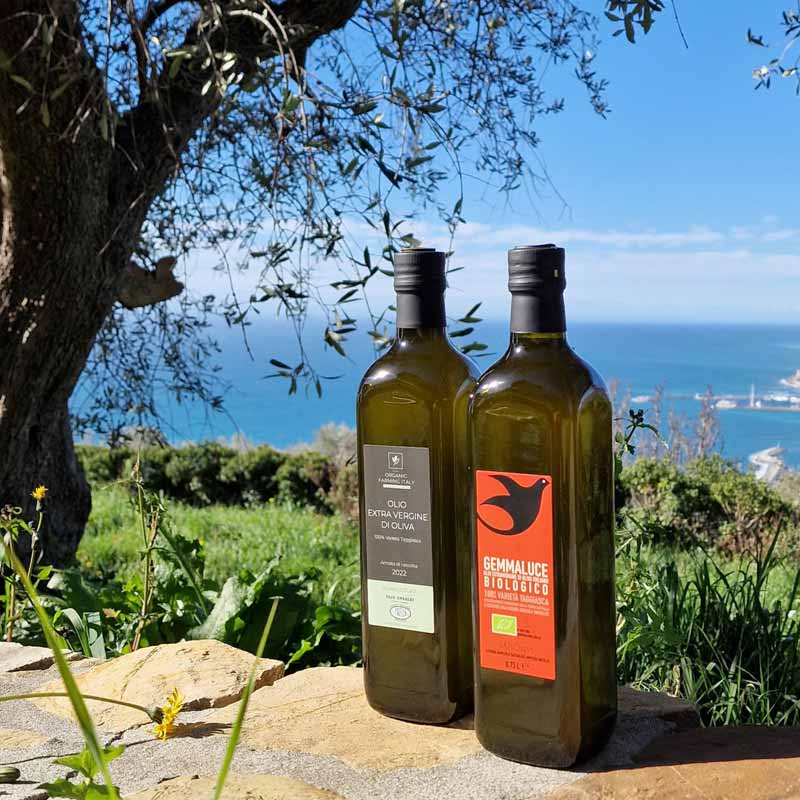
Even in this day and age, when a wide variety of cooking oils are available on the market, olive oil has a special place in our kitchens and hearts. It is not only appreciated for its delicious taste, but also for its numerous health benefits.
Composition of olive oil:
Olive oil is obtained from the fruit of the olive tree (Olea europaea) and is a natural vegetable oil. The composition of olive oil can vary depending on the variety, ripeness of the olives and processing methods, but in general it contains the following main components:
- Fats: Olive oil is rich in healthy unsaturated fatty acids, especially monounsaturated fatty acids such as oleic acid. These fats make up the majority of the oil and are an important part of the Mediterranean diet.
- Antioxidants: Olive oil contains various antioxidants such as vitamin E and phenols, which help to protect the body from oxidative stress and free radicals.
- Phytosterols: These compounds in olive oil can help to lower blood cholesterol levels and protect the cardiovascular system.
- Vitamins: In addition to vitamin E, olive oil may also contain small amounts of vitamin K and vitamin A.
- Minerals: It contains trace elements such as iron and calcium, which contribute to good health.
Health benefits of olive oil:
- Heart health: Regular consumption of olive oil can reduce the risk of cardiovascular disease. The unsaturated fatty acids they contain can lower blood cholesterol levels and reduce inflammation in the body.
- Weight management: Despite its high fat content, olive oil can be part of a healthy diet in moderation. It can increase the feeling of satiety and help to control weight.
- Anti-inflammatory effect: The anti-inflammatory properties of olive oil can help reduce chronic inflammation in the body, which is associated with various diseases, including diabetes, arthritis and cancer.
- Skin health: Olive oil is often used in skin care products as it moisturizes, softens and smoothes the skin and helps protect it from free radical damage.
- Healthy digestion: Olive oil can aid digestion and prevent constipation if consumed in moderation.
- Antioxidant effect: The antioxidants it contains can help to protect cells from premature ageing and strengthen the immune system.
Types of olive oil:
There are different types of olive oil, which vary according to processing and quality:
- Extra virgin olive oil: This is the highest quality grade and is obtained from fresh olives by mechanical means. It has the highest content of healthy ingredients and the best taste.
- First pressing olive oil: This oil also comes from mechanical pressing, but has a slightly lower content of healthy compounds than extra virgin olive oil.
- Pure olive oil: This oil is blended from refined and virgin olive oil and is less healthy as it loses some of its healthy ingredients during the refining process.
- Light olive oil: This oil is highly refined and has a mild flavor. It contains only a few healthy compounds and is often suitable for frying.
Tips for consuming olive oil:
- Use extra virgin olive oil for salads and for drizzling over dishes.
- Store olive oil in a cool, dark place to preserve its quality.
- Use olive oil as a substitute for saturated fats such as butter or margarine.
- Pay attention to the portion size, as olive oil is high in calories.
Overall, olive oil can be a valuable addition to a healthy diet. It offers a wide range of health benefits and has a delicious flavor that enriches many dishes. However, remember to enjoy it in moderation and opt for high-quality varieties such as extra virgin olive oil to get the maximum health benefits.
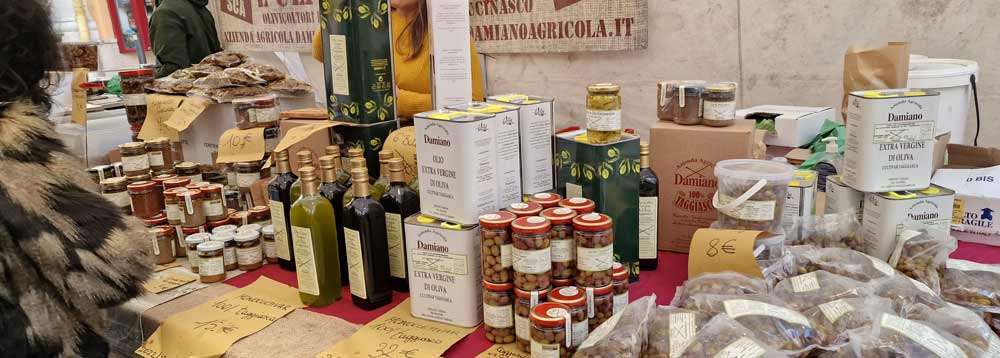
The most important olive varieties
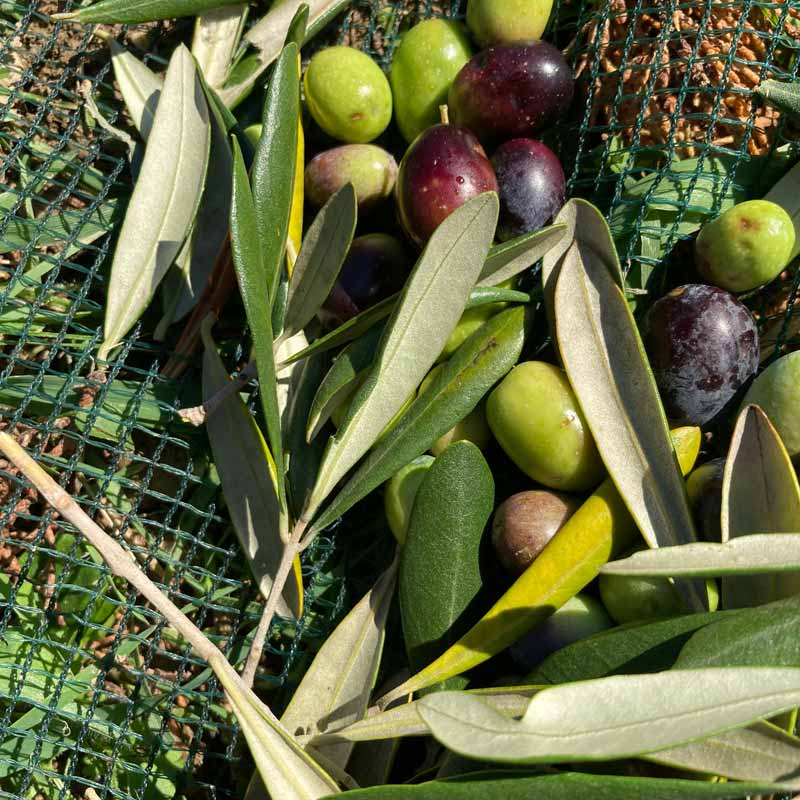
Here are the best known olive varieties from different countries together with short descriptions:
- Verdial: Verdial olives are widespread in Spain and have an oval shape. They have a mild and slightly bitter taste.
- Empeltre: These Spanish olives are round and have a smooth skin. They are known for their mild taste and delicate texture.
- Taggiasca: Taggiasca olives are small, dark olives from Italy. They have a mild, slightly nutty flavor.
- Frantoio: This Italian olive variety is often used to produce high-quality olive oil. They have a fruity and slightly spicy taste.
- Koroneiki: Koroneiki olives come from Greece and are small, round and have an intense, fruity flavor.
- Carrasquenia: Carrasquenia olives are native to Spain and have an elongated shape. They have a mild and slightly bitter taste.
- Picual: Picual olives are one of the best-known olive varieties from Spain and have an intense flavor with a slight bitter note.
- Picudo: These Spanish olives are medium-sized and have a slightly oval shape. They have a mild and slightly sweet taste.
- Leccino: Leccino olives are widespread in Italy and have an oval shape. They have a mild and slightly fruity taste.
- Moraiolo: Moraiolo olives are another Italian variety and are often used to produce high-quality olive oil. They have an intense, fruity flavor.
- Kalamata: Kalamata olives are dark purple to black and come from Greece. They are known for their rich, spicy flavor.
- Galega: Galega olives are native to Portugal and have an oval shape. They have a mild and slightly spicy taste.
- Redondil: Redondil olives are native to Spain and have a round shape. They have a mild and slightly sweet taste.
- Hojiblanca: Hojiblanca olives are widespread in Spain and have an oval shape. They have a mild and slightly spicy taste.
- Bosana: Bosana olives come from Italy and are medium-sized with a slightly oval shape. They are mild and have a pleasant texture.
- Dritta: These Italian olives are round and have a smooth skin. They have a mild and slightly fruity taste.
- Athilonia: Athilonia olives come from Greece and have an oval shape. They have a mild and slightly spicy taste.
- Tsounatis: Tsounatis olives are native to Greece and have an elongated shape. They have a mild and slightly sweet taste.
- Arbequina: Arbequina olives are small and round, originally from Spain. They have a mild, sweet taste and are often used to produce oil.
- Cobrancosa: Cobrancosa olives are native to Portugal and have an oval shape. They are mild and have a slightly spicy note.
- Verdeal: Verdeal olives are widespread in Portugal and have an oval shape. They have a mild and slightly spicy taste.
- Cornicabra: Cornicabra olives come from Spain and have an elongated shape. They have a mild and slightly spicy taste.
- Coratina: Coratina olives are native to Italy and are often used to produce high-quality olive oil. They have an intense, fruity flavor.
- Ogliarola: Ogliarola olives are widespread in Italy and have an oval shape. They have a mild and slightly fruity taste.
- Mastoidis: Mastoidis olives come from Greece and have an oval shape. They have a mild and slightly spicy taste.
- Nocellara: Nocellara olives are native to Italy and have an oval shape. They have a mild and slightly sweet taste.
- Biancolila: Biancolila olives come from Italy and have an oval shape. They have a mild and slightly fruity taste.
- Chalkidiki: Halkidiki olives are widespread in Greece and have an elongated shape. They have a mild and slightly sweet taste.
- Mavronia: Mavronia olives come from Greece and have an oval shape. They have a mild and slightly spicy taste.
- Lechin: Lechin olives are native to Spain and have an oval shape. They have a mild and slightly spicy taste.
- Cerasuola: Cerasuola olives are widespread in Italy and have an oval shape. They have a mild and slightly fruity taste.
- Carolea: Carolea olives come from Italy and have an oval shape. They have a mild and slightly sweet taste.
- Koloves: Koloves olives are native to Greece and have an oval shape. They have a mild and slightly spicy taste.
- Adramitiani: Adramitiani olives come from Greece and have an oval shape. They have a mild and slightly sweet taste.
- Picholine: Picholine olives are native to France and have an elongated shape. They have a mild and slightly spicy taste.
- Glandou: Glandou olives come from France and have an oval shape. They have a mild and slightly sweet taste.
- Saloneque: Saloneque olives are widespread in France and have an oval shape. They have a mild and slightly spicy taste.
- Grossane: Grossane olives come from France and have an oval shape. They have a mild and slightly sweet taste.
- Tandié: Tandié olives are native to France and have an oval shape. They have a mild and slightly spicy taste.
- Houzia: Houzia olives come from Morocco and have an elongated shape. They have a mild and slightly sweet taste.
- Menara: Menara olives are widespread in Morocco and have an oval shape. They have a mild and slightly spicy taste.
- Meslala: Meslala olives come from Morocco and have an oval shape. They have a mild and slightly sweet taste.
- Picholinemarrocaine: These Moroccan olives have an elongated shape and a mild, slightly spicy flavor.
- Zitoun: Zitoun olives are widespread in Tunisia and have an oval shape. They have a mild and slightly sweet taste.
- Chemlali: Chemlali olives come from Tunisia and have an oval shape. They have a mild and slightly spicy taste.
- Chetoui: Chetoui olives are native to Tunisia and have an oval shape. They have a mild and slightly sweet taste.
- Ouslati: Ouslati olives come from Tunisia and have an oval shape. They have a mild and slightly spicy taste.
- Zalmati: Zalmati olives are widespread in Tunisia and have an oval shape. They have a mild and slightly sweet taste.
- Ayvalik: Ayvalik olives come from Turkey and have an oval shape. They have a mild and slightly spicy taste.
- Edremit: Edremit olives are widespread in Turkey and have an oval shape. They have a mild and slightly sweet taste.
- Girit: Girit olives come from Turkey and have an oval shape. They have a mild and slightly spicy taste.
- Domat: Domat olives are native to Turkey and have an oval shape. They have a mild and slightly sweet taste.
- Kiraz: Kiraz olives come from Turkey and have an oval shape. They have a mild and slightly spicy taste.
- Uslu: Uslu olives are widespread in Turkey and have an oval shape. They have a mild and slightly sweet taste.
- Gemlik: Gemlik olives come from Turkey and have an oval shape. They have a mild and slightly spicy taste.
- Celebi: Celebi olives are native to Turkey and have an oval shape. They have a mild and slightly sweet taste.
- Memecika: Memecika olives come from Turkey and have an oval shape. They have a mild and slightly spicy taste.
Please note that there are many more varieties of olives, but this list contains some of the best known from different countries.
The economic importance of olive trees
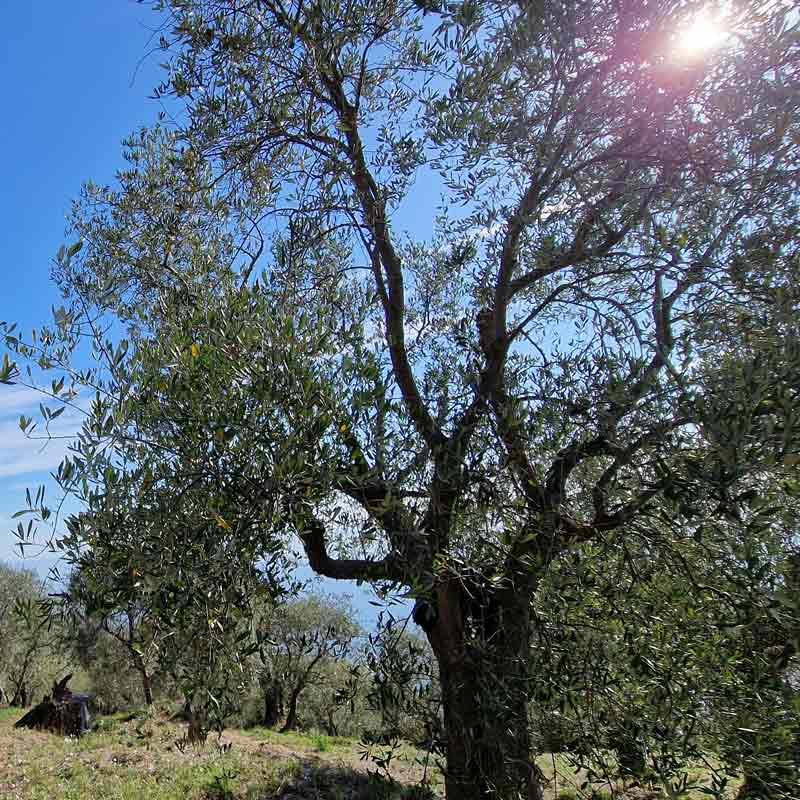
Olive trees are not only a symbol of peace and health, but also have considerable economic significance. In the following, we will take an in-depth look at the economic relevance of olive trees and the various aspects that contribute to this.
The olive harvest and olive oil production
One of the most obvious economic importance of olive trees lies in the olive harvest and the production of olive oil. Olive oil is a versatile product that is widely used in Mediterranean cuisine and is also in high demand internationally. Olive oil production provides jobs for thousands of people, from harvesting the fruit to processing it in oil mills. The olive oil industry is an important economic sector, particularly in countries such as Spain, Italy, Greece and Turkey.
Exporting olive oil to other countries can generate considerable income for these nations and help to strengthen their economies. High-quality, extra virgin olive oil is a sought-after product that is used in upmarket restaurants and in the food industry. The demand for healthy and natural foods has further increased the appreciation of olive oil, which has a positive effect on the economic importance of olive trees.
Olive products and processing
In addition to olive oil, there are many other products made from olives that are also economically relevant. These include pickled olives, olive pastes, olive oil soaps and olive wood products. The processing of olives into these products creates jobs in various sectors, from food processing companies to the craft industry. In rural areas in particular, where olive trees are common, these branches of production play a crucial role in the local economy.
The ecological value of olive trees
Olive trees not only contribute to economic development, but also have considerable ecological value. They are adapted to dry, arid environments and can help prevent erosion and improve soil quality. Their roots hold the soil together and protect it from wind and water erosion. Olive trees also provide a habitat and food for a variety of animal species.
Tourism and agritourism
The cultivation of olive trees can also boost the tourism sector in the growing regions. Tourists often head to the picturesque olive groves to experience the harvest season or take part in agritourism activities such as olive oil pressing or the production of olive products. This tourism can contribute to the diversification of income sources in rural areas and create additional economic opportunities.
Sustainable cultivation
The demand for sustainable and environmentally friendly products is growing worldwide, and olive growing can score points in this respect. Many olive growers rely on organic cultivation and avoid the use of pesticides and chemicals. This sustainable cultivation system can not only protect the environment, but also meet market demand and achieve higher prices for the products.
The challenges for olive trees
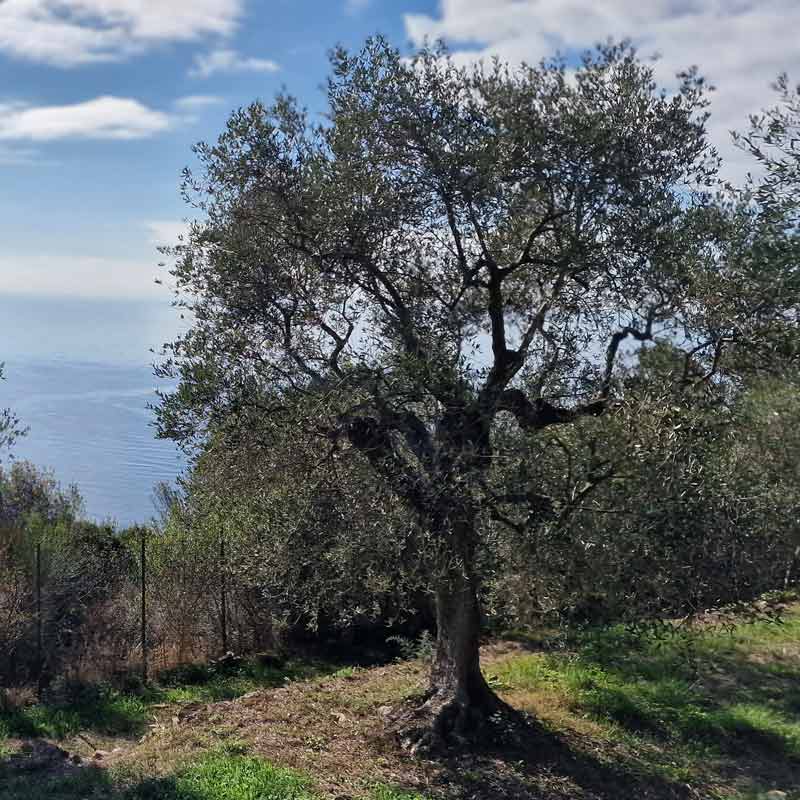
The olive tree industry faces a number of challenges that can affect the health and productivity of olive trees. Here are some of the most important challenges:
- Climate change: Climate change has led to changes in weather conditions that can have a negative impact on olive trees. These include droughts, heat waves and unpredictable rainfall, which affect water resources and jeopardize olive production.
- Plant diseases and pests: Olive trees are susceptible to various diseases such as Olive Quick Decline Syndrome (OQDS) and the Xylella bacterial complex, which can severely damage the trees. Pests such as the Olive Fruit Fly can also cause considerable crop losses.
- Agricultural practices: Traditional agricultural practices can lead to soil erosion, pollution and excessive use of pesticides, which increase the environmental impact and jeopardize the sustainability of olive tree plantations.
- Competition and market volatility: The olive oil industry is facing increasing competition on the global market, which can lead to price fluctuations. Smaller olive growers have difficulties competing with the large producers.
- Water scarcity: Water scarcity is a serious problem in some olive-growing regions. Irrigating olive trees requires large quantities of water, and in dry regions this can lead to conflicts and jeopardize the sustainability of production.
- Sustainable agriculture: Switching to sustainable agricultural practices is a challenge for the olive tree industry. It requires investment in more ecological cultivation methods and the reduction of the ecological footprint.
Overcoming these challenges requires close collaboration between farmers, scientists, governments and the industry to find sustainable solutions that can protect the health of olive trees and maintain the quality and quantity of olive production. This can include the development of resistant varieties, the use of more environmentally friendly cultivation methods and the promotion of fairer trade and sustainable agriculture.
Matching sponsorships
Adopt an organic olive tree in Italy
Adopt olive tree. Adopt your own organic olive tree in Oneglia on the sea in Liguria. Your tree will receive a wooden…
A special gift: organic olive tree adoption
A special gift for all those who want to promote sustainability and support organic farming. The adoption of your own…
Latest product reviews
-
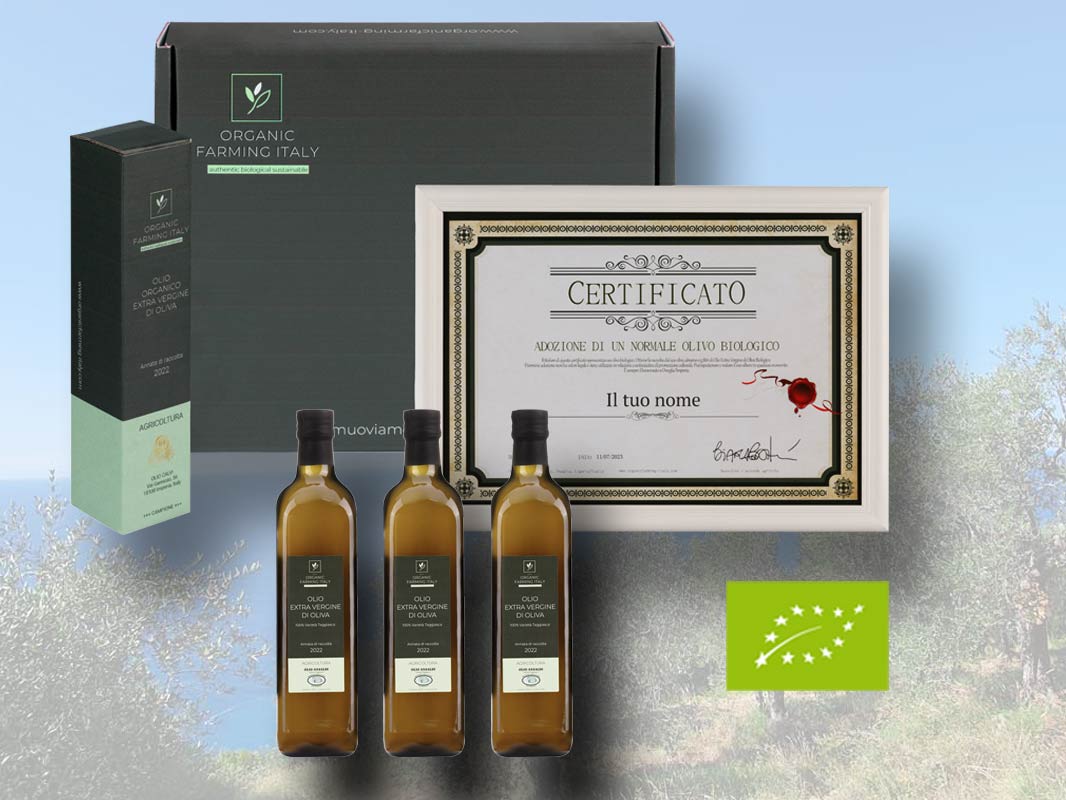 Olive tree sponsorship gift package complete
Rated 5 out of 5by André Wenzel
Olive tree sponsorship gift package complete
Rated 5 out of 5by André Wenzel -
 Olive tree sponsorship gift package complete
Rated 5 out of 5by Mandy Friedrich
Olive tree sponsorship gift package complete
Rated 5 out of 5by Mandy Friedrich -
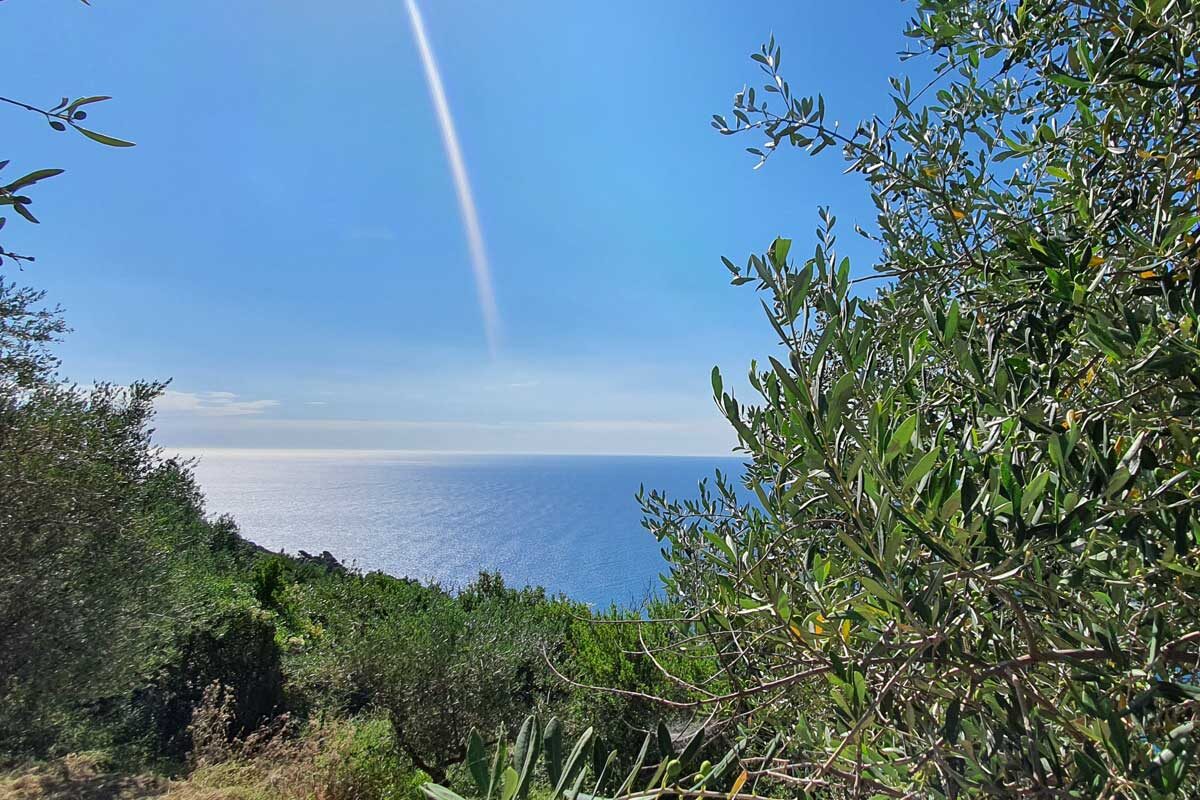 Subscription organic olive tree sponsorship
Rated 5 out of 5by Sylvia Frodl
Subscription organic olive tree sponsorship
Rated 5 out of 5by Sylvia Frodl -
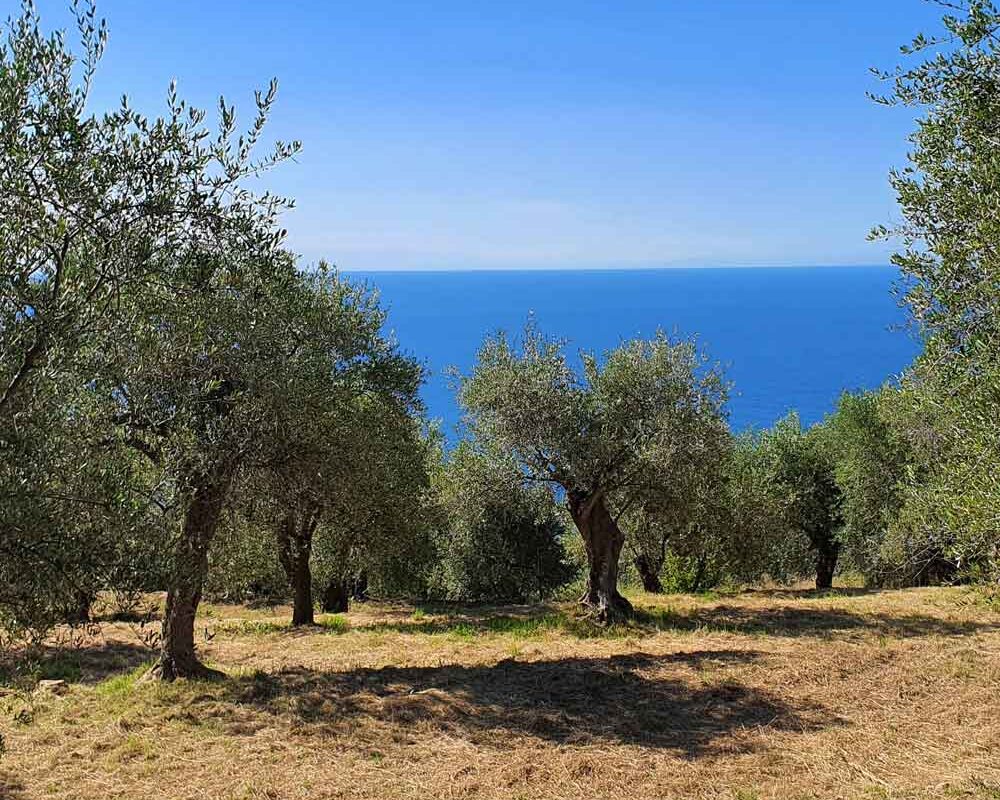 Adopt an organic olive tree in Italy
Rated 5 out of 5by Elena Gizzi
Adopt an organic olive tree in Italy
Rated 5 out of 5by Elena Gizzi -
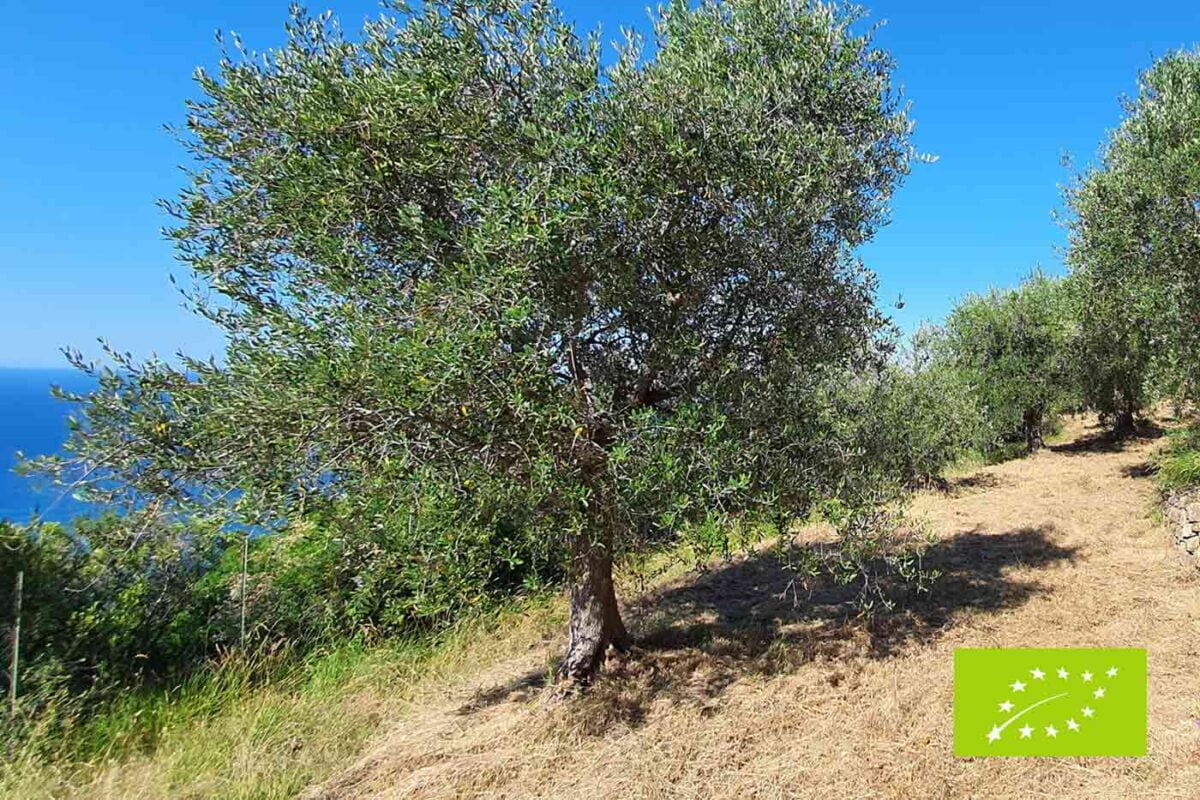 Olive tree sponsorship extension
Rated 5 out of 5by Roland & Claudia Gross
Olive tree sponsorship extension
Rated 5 out of 5by Roland & Claudia Gross -
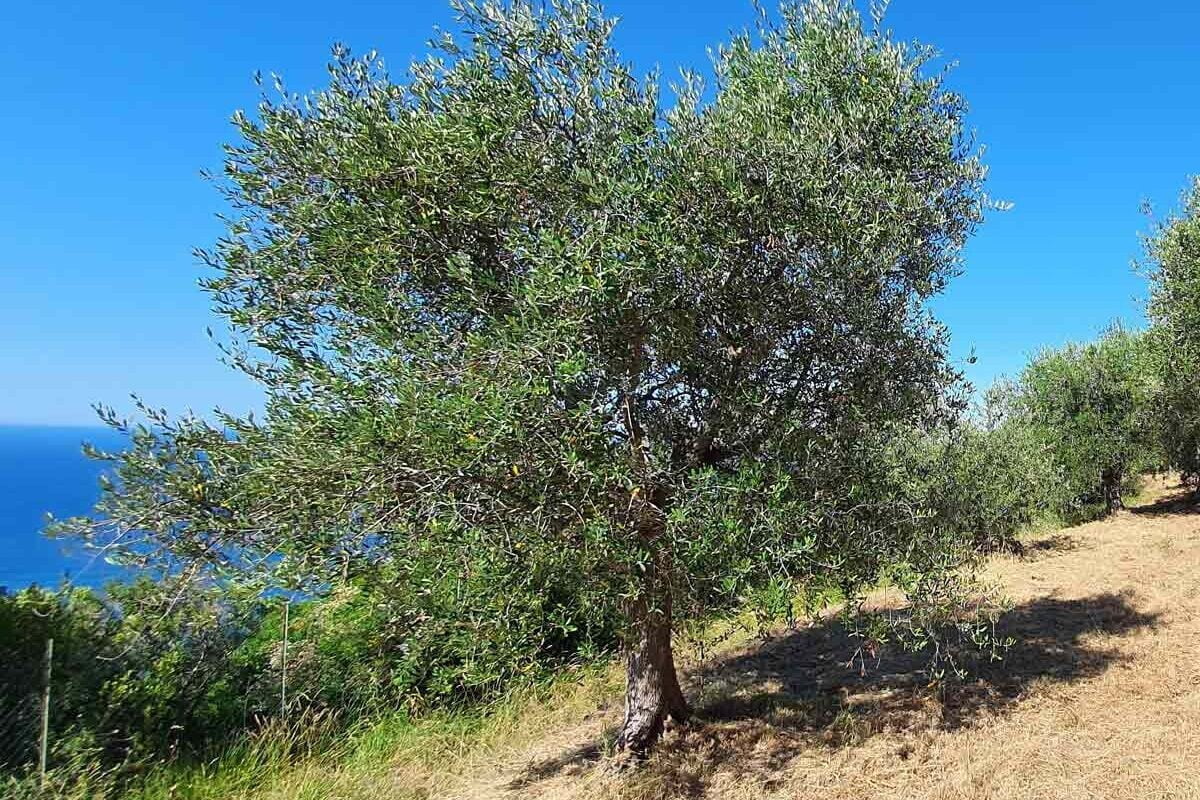 Multi-year extension sponsorship olive tree
Rated 5 out of 5by Sarah
Multi-year extension sponsorship olive tree
Rated 5 out of 5by Sarah





